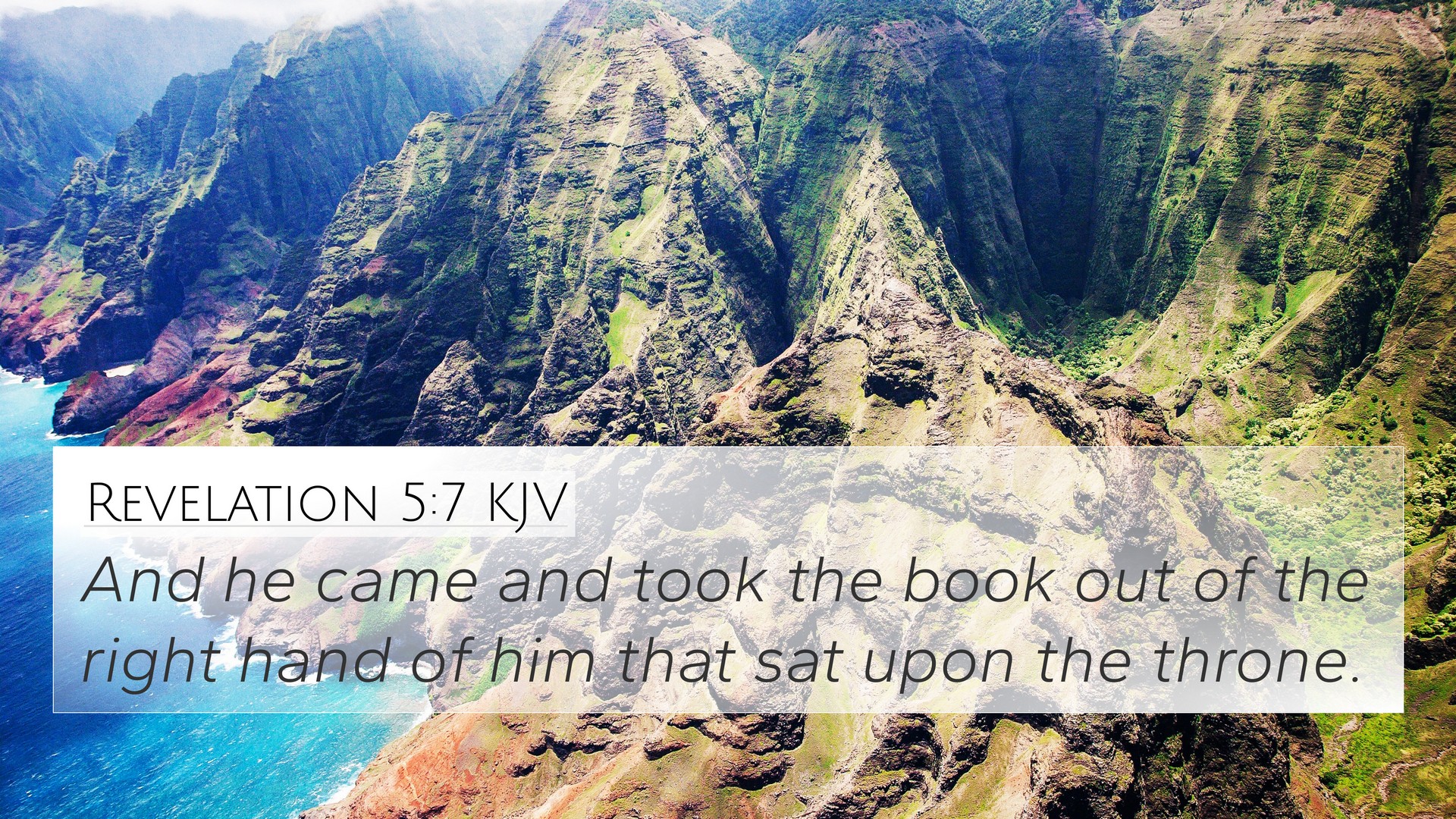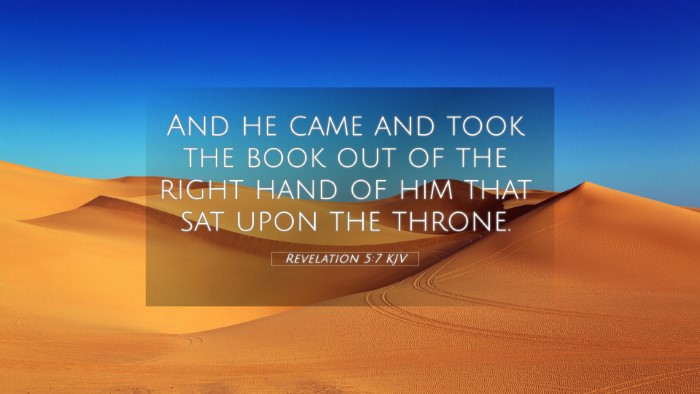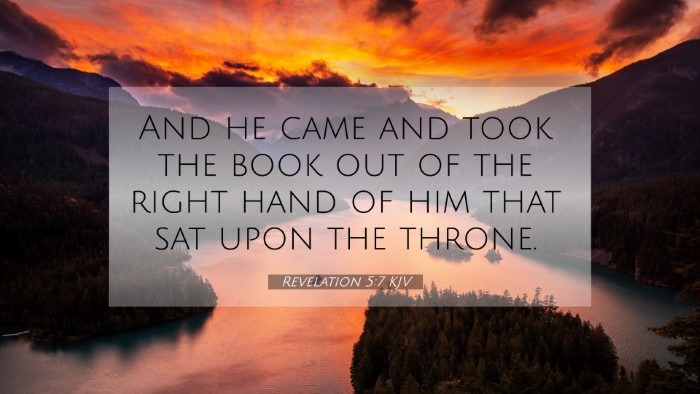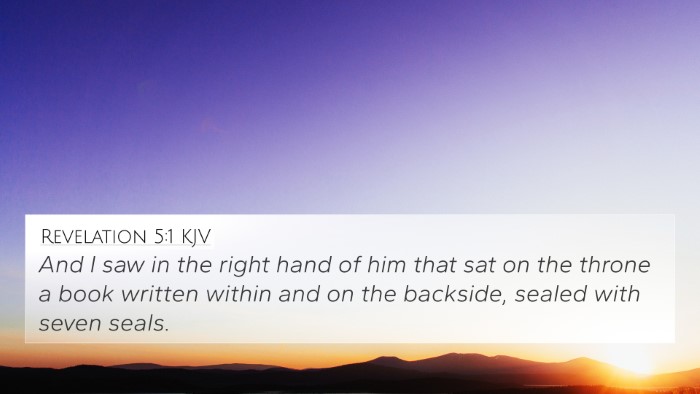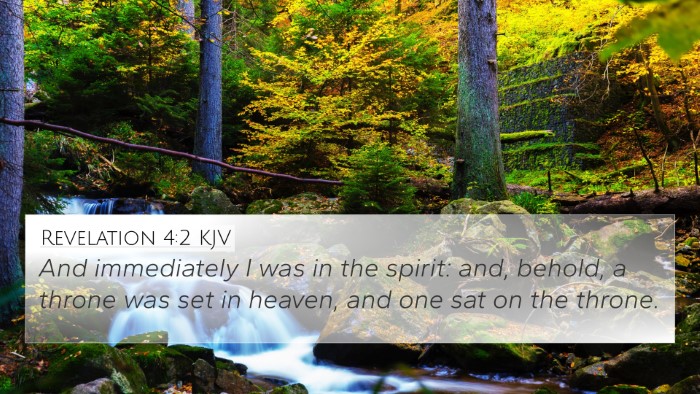Understanding Revelation 5:7
Revelation 5:7 states: "And he came and took the book out of the right hand of him that sat upon the throne." This profound moment captures the gesture of Jesus Christ approaching the throne of God to take the scroll, which signifies His authority and the unfolding of God's redemptive plan.
Summary of Revelatory Insights
In this verse, we observe the culmination of divine authority bestowed upon Jesus, who is the only one deemed worthy to open the seals of the scroll. The scroll symbolizes both the will of God and the future judgment, emphasizing Jesus' role as both Savior and Judge.
Theological Implications
- Significance of the Scroll: The scroll is often interpreted as containing the details of God's plan for the future, including the judgments that will befall the earth.
- Christ's Worthiness: The act of taking the scroll underscores Jesus' unique qualifications; He, as the Lamb, has triumphed over sin and death, thus holding authority over all creation.
Commentary Insights
Drawing upon insights from esteemed biblical commentators:
- Matthew Henry: He emphasizes the importance of the Lamb, highlighting that it is through Jesus' blood that believers are redeemed, granting Him authority to reveal and execute God's plan.
- Albert Barnes: Barnes points out the significance of this throne scene, where Christ's ascension and exaltation are profoundly illustrated. He notes that only Christ, being both God and man, is worthy to mediate this scroll's contents.
- Adam Clarke: Clarke elaborates on the imagery of the scroll, relating it to Old Testament prophecies and the fulfillment of God's promises, suggesting that this moment ushers in the final revelations of God's kingdom.
Connections with Other Bible Verses
Revelation 5:7 is intricately linked with several other passages throughout Scripture, showcasing the thematic connections present in the Bible. Here are key cross-references:
- Isaiah 11:2 - The Spirit of the Lord shall rest upon Him, illustrating His divine authority.
- John 1:29 - “Behold the Lamb of God, which taketh away the sin of the world,” pointing to Christ's sacrificial role.
- Romans 14:9 - “For to this end Christ both died, and rose, and revived, that he might be Lord both of the dead and living,” showing Christ's lordship over all creation.
- Philippians 2:9-11 - Exalting Jesus as the one to whom every knee shall bow, emphasizing His sovereign authority.
- Hebrews 1:2 - God speaks through His Son, indicating Christ's role in the unfolding of the divine plan.
- Revelation 1:5 - Jesus as the "faithful witness, and the first begotten of the dead," confirms His unique position in God's plan.
- Revelation 19:11-16 - The triumphant return of Christ points to His ultimate authority in judgment.
Thematic Bible Verse Connections
In examining Revelation 5:7 within the larger context of Scripture, we see thematic connections that run deeply through the biblical narrative:
- Victory through Sacrifice: The motif of triumph through sacrificial love can be observed from Genesis through Revelation.
- The Sovereignty of God: Throughout the Bible, God's sovereignty in appointing Jesus as the Redeemer is a recurring theme.
- Redemptive History: Each biblical book contributes to the overarching story of redemption, all culminating in the revelation in Revelation.
Tools for Bible Cross-Referencing
For those seeking deeper understanding and connections in Bible study, several tools can enhance your approach:
- Bible Concordance: Utilize a concordance to locate verses related to key themes in Revelation 5:7.
- Bible Cross-Reference Guide: Invest in guides that organize verses by themes or concepts for comparative analysis.
- Bible Reference Resources: Resources that help identify links between Old and New Testament passages will deepen your study.
- Bible Chain References: Explore chain references that connect verses, illustrating inter-Biblical dialogues.
Conclusion
In conclusion, Revelation 5:7 encapsulates a pivotal moment in heavenly worship, where Jesus is recognized as the one worthy to carry out God’s plan. By understanding this verse and its connections through cross-referencing, believers can appreciate the unfolding of divine redemption throughout Scripture. This verse not only stands on its own but serves as a gateway to a broader understanding of God's eternal purpose.
